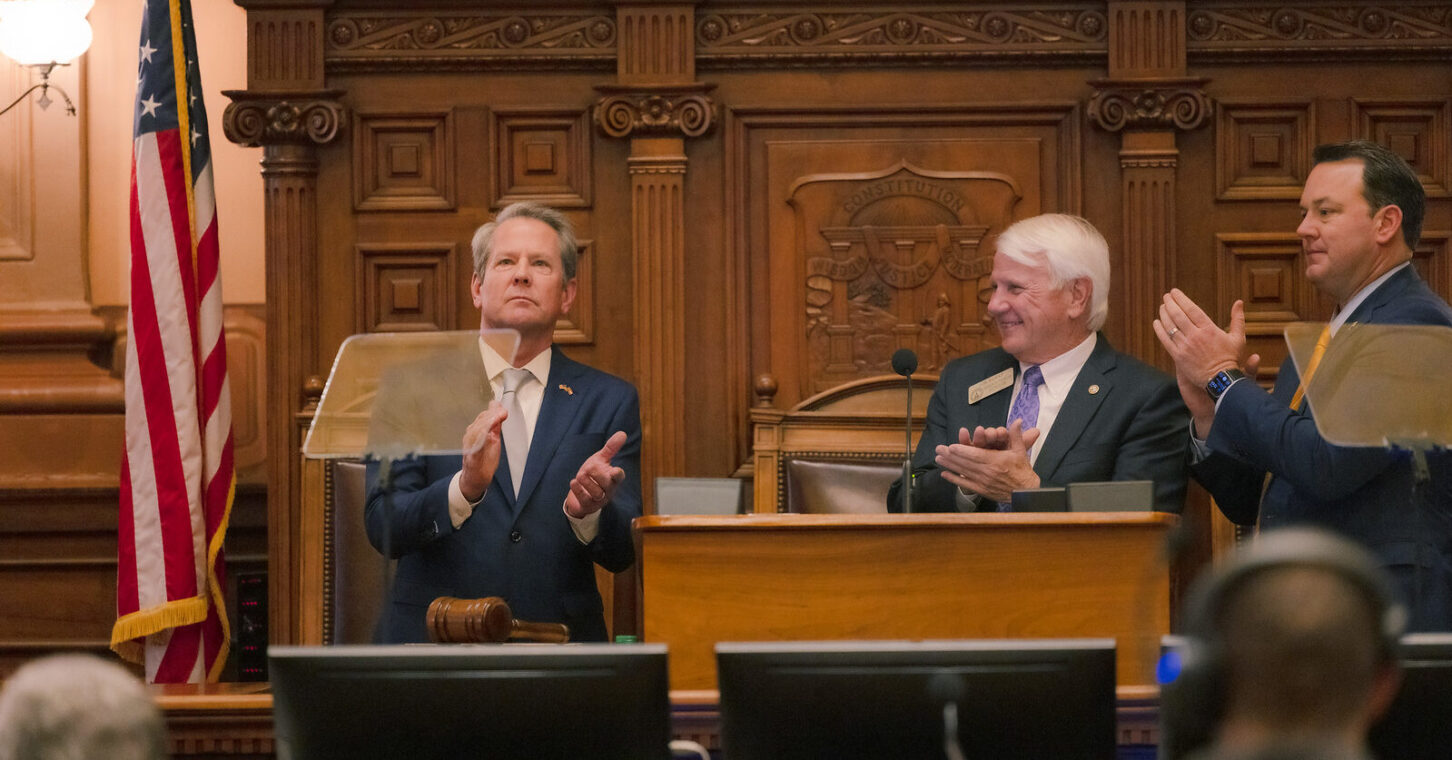
The “four corners offense” has been extinct in college basketball for almost 40 years. But it was alive and well under the Gold Dome on the final day of the 2024 legislative session.
I refer to a style of play in which a team with a lead drains the clock late in the game by playing “keep away” and avoiding taking a shot. The tactic died when the shot clock was introduced to speed things up.
The General Assembly’s only shot clock is the 40-day limit on its legislative sessions. Most of its other rules are meant to slow down the lawmaking process. As someone who doesn’t want lawmakers to make laws only for the sake of lawmaking, that’s a good thing.
But this past Thursday night, lawmakers took their lack of haste to a new level.
Start with the Democrats in both the House and Senate. Typically, the minority caucus tries to gum up the works because it has few other means of altering or preventing bills it dislikes. The best defense, sometimes, is offense. Parliamentary procedure is rife with rules and tactical maneuvers allowing as much, and it’s all fair game.
What’s odd legislatively is to watch the team with the ball – the Republicans – slow to a crawl with limited time to put proverbial points on the board.
Veteran legislative observers expect leadership to bleed the clock: Deadlines concentrate minds and force hands, an effect that only increases as time runs short. But usually, this happens only up to a point.
This year, even as night fell, both the House and the Senate went much longer stretches than usual without legislating. Lobbyists and advocates, growing more and more frantic as the clock crept ever later, kept asking: Why?As someone whose organization’s legislative priorities were already complete before that final day began, I’ll offer some observations.
The first is that, two years in, the still-new GOP leaders in the House and the Senate are still feeling each other out:
How does each respond to pressure, whether from time or tactics? How transparent, protective and resolved is each about its priorities?
If this sounds silly because both chambers are led by Republicans, understand that the chambers view themselves as fiercely independent of one another – just as much as they are independent of the executive and judicial branches. It is a hallmark of these institutions, one that has transcended time and partisan control.
A related thought is that the two chambers have rather different visions for the state.
Don’t get me wrong: These visions are not as different, or irreconcilable, as they are from the Democrats’ vision. But they are sufficiently disparate in scope and urgency as to fit together awkwardly, if at all.
You see it in matters such as tax credits. The Senate wants to be much more aggressive about paring them back to create capacity for lowering tax rates for all. The House is more reluctant to jeopardize something it deems crucial to the state’s economic success. It takes both chambers to change the law, so the advantage on any given topic – at least in the short term – goes to the more hesitant body.
The present dynamic may owe in part to the fact that the president of the Senate, Lt. Gov. Burt Jones, won a statewide campaign in which he made specific appeals to voters. Meanwhile, the speaker of the House, Jon Burns, not only was chosen from among his colleagues, but he took office under difficult circumstances: the untimely death of his predecessor, David Ralston. (Here we must acknowledge that a third player, the governor, also looms large in the legislative process; but that’s a column for another day.)
One legislative term under new leadership is now complete. This gives each chamber a chance to return to the drawing board and develop some ambitious plans for the next term. If they take that chance, we should see them do more than milking the clock this time next year.